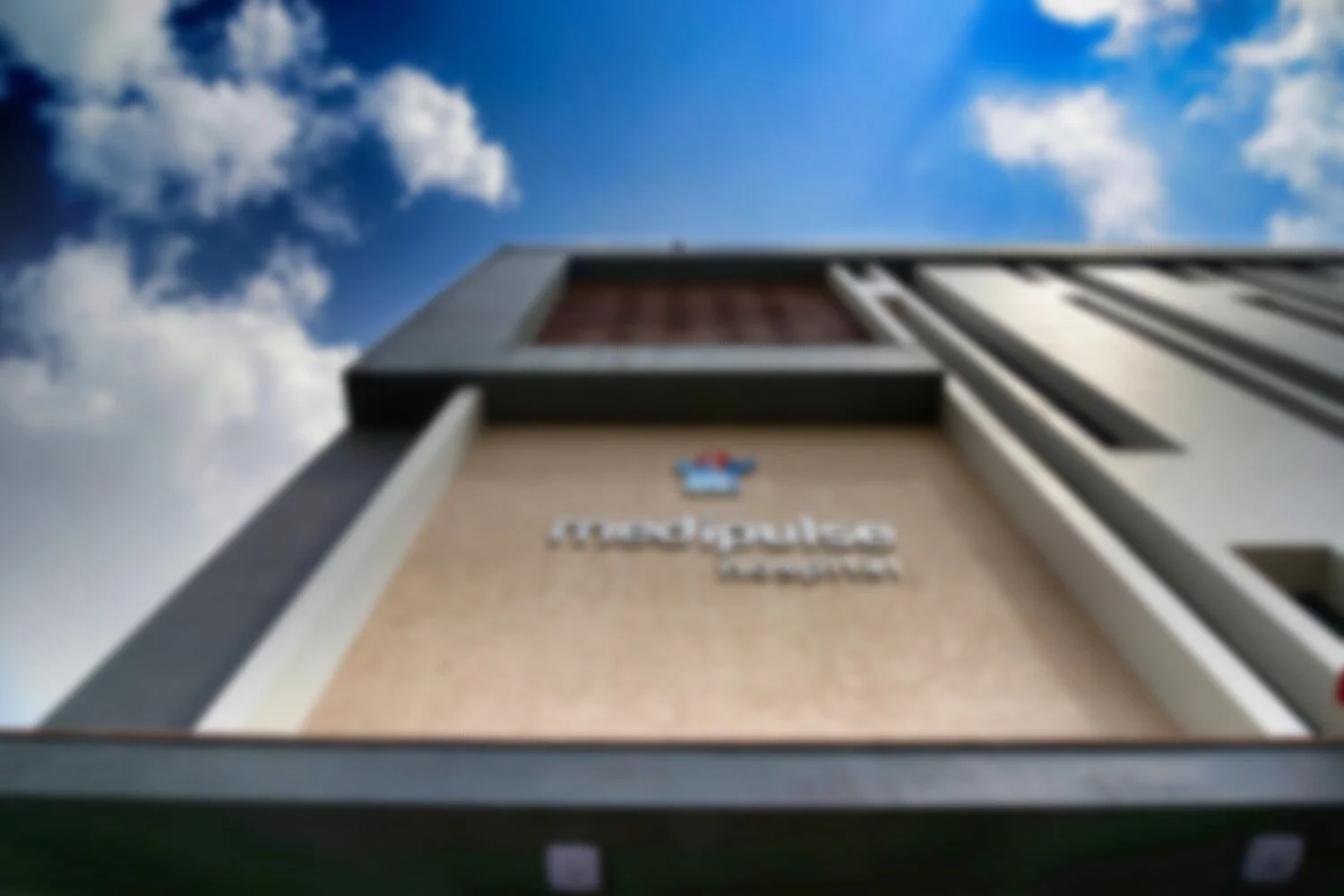
Why should you opt for Off-pump bypass surgery?
Off-pump coronary surgery is gaining widespread acceptance and has entered in the mainstream clinical practices. The advantages of off-pump surgery have led to an increase in the proportion of surgeons accepting the method worldwide. Know what benefit it offers to patients and why they should opt for the surgery.
In the last couple of decades, Coronary-Artery Bypass Grafting (CABG) or bypass surgery was performed with cardiopulmonary bypass or “on-pump.” A desire to improve the outcomes of surgery led to technological advances. These technological advances have made surgery on a beating heart possible and techniques to perform CABG without cardiopulmonary bypass (off-pump), were developed. The surgical instruments used in these kinds of surgery limit the motion only to the areas where the heart is being operated.
According to a study, approximately every 10 minutes, someone is undergoing off-pass bypass surgery somewhere. In this process, the surgeon removes a section of healthy artery from the healthy area of the body. The removed section, called graft, is then attached to the area of the heart above and below the blockage, restoring the normal blood flow. But, why one should opt for off-pump bypass surgery over on-pump surgery?
Improved Outcomes
A research study proved that off-pump bypass surgery improves outcome in high-risk patients compared to on-pump coronary artery bypass. The surgery has been found associated with a reduction in the odds of cerebral stroke and other related issues.
Excellent for High-Risk Patients
In high-risk patients, off-pump surgery must be strongly considered. Research studies have proved that certain people, for instance, with advanced atherosclerosis of the aorta, chronic lung disease, or kidney problems, are likely to receive more benefits. The surgeons mostly prefer off-pump for reduced risks for infection and lesser postoperative inflammation.
Improved Quality of Life
The off-pump surgery improves the physical and mental health components notably. While the metabolic needs of various organs and muscle tissues are higher in on-pump than in off-pump. The depression and anxiety scores also decrease significantly in off-pump techniques.
Lower Complications
As the off-pump technique is comparatively new, the complications are quite less. The complications like accelerated fibrinolysis, renal impairment, coagulopathies associated with platelet dysfunction, etc., can be avoided or at least reduced largely. Besides, the surgery also has reduced morbidity or mortality rate.
Indeed, off-pump surgery is more beneficial than the conventional bypass surgery. However, an expert healthcare provider must be considered for undergoing such surgeries to avoid risks. Medipulse houses experienced doctors and have a world-class infrastructure for performing these surgeries. Dr. Rajeev Gehlot , the most renowned heart specialist in Jodhpur, heads the department of cardiothoracic and vascular surgery. His expertise and precision have made numerous heart surgeries successful in Rajasthan.
Painless Delivery Is Now A Possibility
With modern abilities of technology; delivery has become painless. As an expectant mother, you deserve to get the support that helps you approach with confidence!
The new mom-to-be certainly experiences a mixed feeling of both excitement and anxiety. The anxiety increases as one reaches closer and closer to the due date. On a severity scale of 1 to 10, most women usually feel the pain ranging from 8 to 10. The pain can become unbearable, especially for women going through their first pregnancy. Some women go for c-section just because of the fear of labour pain.
With the latest developments and recent interventions, gone are the days where women used to suffer from extreme discomfort and severe pain. Advancements in medical science have made painless delivery a reality now.
How Does It Work?
Painless delivery is just a normal vaginal delivery without pain. It is achieved through administrating anaesthesia called epidural.
Firstly, local anaesthesia is injected to numb the region. A thin catheter is then inserted via a needle into the epidural area to deliver epidural in that specific region. In general conditions, an epidural takes 10 minutes to get placed in the body and another additional 10-15 minutes to work.
Epidurals basically interfere with the hormones and inhibit beta-endorphin production, providing effective pain relief. The lower limbs and the pelvis receive a strong yet small enough anaesthesia to feel contractions and be aware of the birth.
Who can have an Epidural?
All pregnant women can undergo delivery using this method. In addition, it is especially recommended for those who are having:
● Complicated or prolonged labour
● Certain medical condition like hypertension
● Vaginal birth after caesarean section
However, women who are on blood-thinning drugs, have bleeding disorders, certain neurological disorders, or who have had lower back surgery must discuss the process with an obstetrician.
Benefits of Epidural
This method is beneficial when all other types of coping mechanism are no longer helpful in dealing with fatigue, irritability, and exhaustion. Besides, the benefits include:
● It provides relief to pregnant women and provides enough strength to move forward as an active mother in birthing.
● The method prevents damage of pelvic muscles that may be the case in a standard delivery.
● The duration of childbirth also reduces with this method.
● It becomes easier to perform c-section if needed in an emergency.
Temporary Side Effects/ Cons Associated With Epidural
● Epidurals may cause headaches, shivering, or dizziness
● Difficulty urinating
● Soreness in the region where the injection is given
However, these conditions fade away with time, and the surgery does not lead to any irreversible damage or side-effects. The method remains the most sought-after delivery method.
That being said, it is a method that guarantees comfortable labour. Additionally, being prepared about the whole procedure helps; therefore, you should seek the consultation of an expert. Medipulse, regarded as the best gynaecology hospital in Jodhpur, is widely-known for adopting advanced procedures in surgeries. If you or any of your relative wants a normal painless and stress-free delivery, then you can visit us. Our department of gynecology and obstetrics houses renowned and experienced gynecologists like Dr. Jai Shree Sharma, Dr. Pushpa Mathuria, and Dr. Mili Inania. Our painless procedures have brought joy to many mothers.
Timely Vs. Delayed Laparoscopic Cholecystectomy: Know The Benefits
Laparoscopic Cholecystectomy offers a welcoming relief from sudden and unbearable gallstone attacks. Also known as keyhole surgery, timely laparoscopic surgeries reduce the risks of gallstone complications significantly. Read this blog to know more.
Gallstones are solid particles that are formed in the gallbladder due to overproduction of cholesterol and bilirubin in the liver. In the past, gallstones were treated using open surgical procedures, which meant more extended hospitalization and recovery time for the patients. However, laparoscopic Cholecystectomy is a minimally invasive alternative for the treatment of Gallstones. With only a few minor incisions; single or multiple gallstones can now be removed within a few hours.
Gallstones Symptoms
Gallstones do not have any active symptoms, and initially, an individual may feel little or no discomfort. But if left untreated for long, gallstones can cause multiple complications including cholecystitis (gallbladder inflammation), jaundice, intense periodic pain in the abdomen, etc. Acute abdominal pain, high fever, yellowing of the skin, and eyes are seen as early signs of gallstones and must not be ignored.
Timely Vs. Delayed Laparoscopic Cholecystectomy
Laparoscopic Cholecystectomy has become the most preferred treatment for symptomatic gallstones. It is cost-effective, safe, and promises a better life for patients post-treatment. A surgeon will suggest ELC (early laparoscopic cholecystectomy) only upon confirmation that the inflammation does not obscure optimal view during surgery.
The first few days after gallstone diagnosis are usually considered as the best time for laparoscopic cholecystectomy. However, the time points for treating acute cholecystitis vary with inflammation. Even upon diagnosis, the treatment may be delayed to allow the inflammation or cholecystitis to subside. But this delay can cause a series of complications related to the liver and gallbladder. Let’s look at some of the key advantages that early LC offers over delayed LC.
1. Minimum Complications:
Early LC ensures that gallstones do not cause other major complications in the liver. In the worst of cases, gallstones become the reason for cancer of the gallbladder in patients. Early LC has helped significantly bring down mortality rates from acute cholecystitis or acute pancreatitis.
2. No GallBladder Attack:
With early LC, patients no longer need to suffer from prolonged excruciating abdominal pain. If LC is delayed, patients will have to bear with periodic intense pain, eventually leading to fever. A gallbladder attack can last for a few hours and can come anytime, anywhere.
3. Cost-Effective:
Early LC is cost-effective too. Gallstones can be removed within a few hours, and the patients can leave the hospital on the same day. In comparison to this, a delayed LC involves considerable visits, routine diagnosis, more extended hospitalization, and recovery time. In sharp contrast, early LC is not at all time consuming and extremely cost-effective.
When To See A Doctor?
Gallstone attack can last up to a few hours, and one must see a doctor at the first occurrence of uninvited and intense stomach/abdominal pain. Any pain in the right shoulder, upper, and central abdomen must not be ignored considering the multiple health issues associated with gallstones. The doctor will perform some routine diagnosis, including CT scan and blood tests to confirm gallstones.
Moreover, pregnant women, people suffering from obesity, people on cholesterol-lowering medications, and people over 60 years of age are at higher risk of gallstones. These individuals must be wary of symptoms like sudden fever, increased heart rate, nausea, fatigue, or confusion, and must visit the doctor for gallstone diagnosis.
The abdominal is one of the most critical regions in our body. It houses some of the most important organs that determine the overall well-being of our body. At Medipulse, we offer the most advanced Laparoscopic surgery for Gallbladders, appendices, and colons. Dr. Vivek Agarwal is the best Laparoscopic surgeon in Jodhpur. His expertise has helped hundreds of people in town.
Role of Physiotherapy in Knee Arthroscopy
The knee joint is one of the strongest joints in the human body. As our whole body weight is dependent on them, it is one of the most stressed joints. No wonder knee pain and other knee related conditions are a common problem, regardless of the age. When your doctor suggests you professional physiotherapy after your knee surgery/operation/arthroscopy, 'don't brush off his advice. Physiotherapy aids the rehabilitation process from knee arthroscopy. It contributes to improving our knee's range of motion, its strength, and overall function.
The knee joint is one of the strongest joints in the human body. As our whole body weight is dependent on them, it is one of the most stressed joints. No wonder knee pain and other knee related conditions are a common problem, regardless of the age. When your doctor suggests you professional physiotherapy after your knee surgery/operation/arthroscopy, 'don't brush off his advice. Physiotherapy aids the rehabilitation process from knee arthroscopy. It contributes to improving our knee's range of motion, its strength, and overall function.
'Let's understand what knee arthroscopy is and what role physiotherapy plays after arthroscopy:
What is Knee Arthroscopy?
Knee Arthroscopy is a surgical procedure used to treat problems in the knee joint. In this procedure, a small incision is made near the knee, through which an arthroscope is inserted inside. The camera fitted at one of the ends of arthroscope helps to diagnose the problem. Several conditions like a torn meniscus, misaligned patella, etc. can be treated through arthroscopy.
What is the Recovery after Knee Arthroscopy?
Though the surgery 'isn't very complicated, the invasive nature of the surgery warrants dedicated physical rehabilitation.
Besides the ice pack and dressing, physiotherapy is advised to help your knee recover. Physiotherapy from a professional physiotherapist is extremely important to restore the knee to its functionality.
Let's understand the role of physiotherapy and physiotherapist:
1. A physiotherapist brings with himself crutches wherein the patient is taught how to walk safely with them. This is done to avoid excess pressure and weight on the operated leg. Excess pressure may increase the pain and lead to swelling.
2. After the surgery, the knee may appear weaker; therefore, the exercise programme is curated to strengthen the muscles around the knee. It is advisable to indulge in exercise as soon as possible to avoid further complications.
3. Full range flexing exercises are suggested to improve the range of motion of the knee.
4. After two or three weeks, the exercise regime is changed into calf stretch, hamstring curls, lunges, steps, etc. to further strengthen muscles and restore functionality.
These strengthening exercises are aimed at building up your endurance. However, the training must be under the consultation of the doctor and physiotherapist. Not only does the physiotherapist assists on the exercise, but they also analyse the progress to introduce changes in the regime accordingly. They play the role of a personal trainer, counselor, etc. in this recovery process.
If you are suffering from any knee ailment or sports injury, then you must head to our Department of Arthroscopy and Department of Orthopedics. Led by the best orthopedic surgeon, Dr. Rahul Garg our department is well equipped to diagnose and treat complex knee joint related issues with ease. Head to Medipulse now and let us take care of all your worries!
Common Migraine Triggers and Ways to Deal with Them
Commonly occurring in every 1 out of 7 people around the world, migraine is categorized as a chronic disease. The sudden onset of a migraine can be a state of everlasting pounding headaches, confined rooms, cold towels, and restlessness. With triggers varying widely from patient to patient, migraine can be a confusing state. While the arrival of migraine seems sudden and unexpected, however the attack warrants many signs that we must acknowledge.
Commonly occurring in every 1 out of 7 people around the world, migraine is categorized as a chronic disease. The sudden onset of a migraine can be a state of everlasting pounding headaches, confined rooms, cold towels, and restlessness. With triggers varying widely from patient to patient, migraine can be a confusing state. While the arrival of migraine seems sudden and unexpected, however the attack warrants many signs that we must acknowledge.
To bring the pain down, one of the best things to do is to learn your personal triggers. Self-awareness and detailed knowledge can lead to proper management and preventive tools to reduce the effects of a migraine.
To effectively avoid future attacks, let’s take a step closer in managing this health issue; let’s understand a few common triggers and ways to deal with them:
1. STRESS
Migraine and Stress are directly proportional to each other. Any kind of Stress, whether anxiety, tension, etc. can vehemently welcome a migraine attack. It is believed that Stress is the trigger for almost 70% migraine attacks.
It is also associated with the fact that our constant worry of the future attack ultimately leads to Stress. This becomes a never-ending and exhaustive cycle.
How to Cope Up: As they say, ‘we should take charge of our health’; therefore, we must invest our time in practices that reduce our worry and stress. We must indulge in relaxation therapy, yoga, meditation, etc. to calm our body, nerves, and mind. We must also maintain our sleep cycle. Regular practice of these things shapes our body in a way that our reaction to stress reduces.
Did you know? According to a survey, at least 49% of adults in America were suffering some sort of significant stress last year.
2. CAFFEINE
There are varying reviews regarding caffeine, while some suggest that excess caffeine consumption leverages their migraine attack others believe that a cup of coffee helps in managing such attacks. Commonly, excessive use can lead to the onset of a migraine attack.
How to Cope Up: Patients with severe migraine attacks must lower down their caffeine consumption. Patients must note that coffee is not the only source of caffeine; in fact, the percentage is also present in chocolates, tea, etc.
3. COMPUTER SCREEN
In this tech-driven world, our jobs necessitate the use of computers. Spending long hours on computers can trigger migraine symptoms, especially in migraine patients. It becomes all the more harmful if we use a low-resolution monitor as they strain our eyes more.
How to Cope Up: Although we can’t change our jobs easily however we can take precautions in our own little ways. We must take regular breaks and put a glare screen on our monitor. We must also maintain the right posture while sitting and indulge in regular neck and back exercises to avoid muscle tension build-up in the neck and shoulders, etc.
4. Hormones
It is interesting to note that women account for three fourth of the total migraine patients, and this has to do with the changing nature of female hormones. In fact, in women, migraine can start as quickly as puberty and is closely linked to the menstrual cycle. Menstrual migraine occurs during the period time due to changes in the hormonal level.
How to Cope Up: One must consult a endocrinologist, for proper medication to stabilize hormonal related. Besides these changes in lifestyle and diet also contribute to preventing future migraine attacks.
5. Irregular Sleep Schedule
A good night’s sleep is essential for health. With time, as sleep quality has decreased, it has invited a lot of problems related to body, mind, skin, etc. Irregular sleeping patterns or sleep deficiency heighten migraine symptoms. When our sleep pattern changes or becomes uneven, we are more prone to migraine attacks. In such cases, it is advisable to visit the best Pulmonologist in town, Dr Sumita Agarwal.
How to Cope Up: To save yourself from severe headaches, it is best to consult the best neurologist in Jodhpur Dr. Pratap Sanchetee and Dr. Kirti Sachdev for a proper solution to this condition. Severe migraine can lead to numbness, confusion, vertigo, and other neurological symptoms. During such conditions, one must head to the best neurology hospital in Jodhpur Medipulse Hospital for accurate diagnosis and specialized treatment.
A severe headache can also be a sign of brain abnormalities; therefore, our Radiology department is fully equipped to carry out MR Imaging of the Brain in migraine patients, under the expert guidance of Dr Sanjay Nathani. Book your appointment with us now. Don’t delay!
Role of Laparoscopy in Chronic Abdominal Conditions
There have been times where you must have felt sudden and acute pain in your lower left abdomen. A vigorous activity or a heavy meal might have caused pain in the upper abdomen. What is the cause of this sudden pain? How did this pain develop? How to treat this medical condition? Let’s find out:
There have been times where you must have felt sudden and acute pain in your lower left abdomen. A vigorous activity or a heavy meal might have caused pain in the upper abdomen. What is the cause of this sudden pain? How did this pain develop? How to treat this medical condition? Let’s find out:
What is Abdominal Pain/Condition?
Abdominal pain can range from minimal to chronic, and from sudden to longstanding, as a result of inflammation or disease in the organs surrounding abdomen. These organs include the stomach, small intestine, liver, gallbladder, pancreas, etc.
Chronic abdomen pain are often recurrent and persistent, posing unique challenges for patients. Various causes of abdominal pain are;
1. Indigestion
2. Gallbladder Inflammation
3. Inflammatory Bowel Disease
4. Appendicitis
5. Ulcer
6. Pancreatitis
7. Abdominal Hernia
8. Gastroenteritis, etc.
However, the pain is not restricted to just these conditions; the causes can be far and many. As the nature and characteristics of pain is dependent on a number of factors, the medical diagnosis of the cause is quite tricky and challenging.
In case of minimal pain, the treatment entails medication and dietary changes however persistent and severe medical conditions call for a surgery for complete diagnosis.
Treatment: Diagnostic Laparoscopy
Since the day of inception, medical science is constantly striving to achieve innovation, simplification and effectiveness in its procedures. As a result, various advancements have been made in the management of chronic abdominal disorders. Although techniques like ultrasound, computed tomography scan help is clinical examination of abdominal disorders yet the diagnosis of chronic abdominal disorder remains uncertain in most cases. In such a scenario, Laparoscopy has proved to be an effective treatment for patients with chronic abdominal disorders. Over the last two decades, laparoscopy has successfully offered simple, rapid and safe diagnosis of abdominal disorders. In fact it has been 100% accurate in diagnosing intra-abdominal malignancy as well.
Diagnostic laparoscopy provides the advantage of tissue diagnosis in less operative time and without significant complications.
Visualization of abdominal cavity through laparoscopy helps to conduct precise targeted biopsy, fluid analysis, etc.
One of the distinct advantages is that it is capable of detecting lesions of size less than 5 mm. Techniques like ultrasound and CT scan fail to scan small lesions.
Laparoscopy-guided biopsy offers more accurate diagnosis than radiological guided biopsy.
Laparoscopy has undoubtedly proved to be a fantastic diagnostic modality with less inherent risks, minimal invasion and fast recovery time. Rapid advancements in the field have made this procedure highly successful in diagnosis of abdominal disorders. Ranked as the best laparoscopic surgeon in Jodhpur, Dr. Vivek Agarwal and Dr. Kamal Kant head the General and Laparoscopic Surgery Department at the Medipulse Hospital, Jodhpur. Our department is equipped with world class facilities to ensure high standards of diagnosis, treatment and research in laparoscopic surgery. Book your appointment now!
Aneurysm or Hemorrhage: What is The Difference?
The human brain is one of the most complex existing structure in the world, wired in a manner that is still being researched. It is a known fact that the brain produces enough electricity to light up a small bulb, with impulses running inside at a speed of more than 150 miles per hour. However, such complexity has given birth to many self-created complications. As the brain is the powerhouse of the body, a problem occurred there, adversely affects the functioning of the whole body.
The human brain is one of the most complex existing structure in the world, wired in a manner that is still being researched. It is a known fact that the brain produces enough electricity to light up a small bulb, with impulses running inside at a speed of more than 150 miles per hour. However, such complexity has given birth to many self-created complications. As the brain is the powerhouse of the body, a problem occurred there, adversely affects the functioning of the whole body.
Like every other healthy organ, even the brain feeds on the oxygen and nutrition that is supplied through the blood vessels. When this flow of blood to any certain part of the brain is disrupted, the condition that ensues is called a stroke. In the case when the blood is interrupted due to a burst vessel or blood leak in the brain, it is called a hemorrhagic stroke. One of the major causes of this leak or bursting is small ballooned pockets of blood vessels called Aneurysms.
This information may seem like Hemorrhages and Aneurysms are pretty much synonymous with each other, while the truth is somewhat different. Here is what both the conditions mean and how are they different from each other.
What Is A Hemorrhagic Stroke?
Originating from the Greek word, Hemo, which means blood, a hemorrhage is basically ‘blood bursting forth.’ In the case of a hemorrhagic stroke in the brain, the blood vessel bursts or starts to leak onto surrounding areas, bleeding into the regions of the brain where it should not. As per researches, about 13% of all brain strokes are Hemorrhagic.
A hemorrhagic stroke is caused by several factors, most common of which are:
● Head Trauma or injury
● Heightened Blood Pressure
● Abnormalities in the Blood Vessels like Weakness, Small, unnoticed bleedings.
● Anemia
● Hemophilia
● Liver Disease
● Tumors
● Aneurysm
What Is Aneurysm?
An Aneurysm is, simply, a bulged artery. When a part of the artery wall becomes weak, the pressure causes it to bulge in the area. This event makes it more prone to bursting and bleeding. As is evident by the statement, when an Aneurysm bursts inside the brain, the situation quickly escalates to a Hemorrhagic stroke. Not only that, a person with an aneurysm has a higher chance
In the case of a burst, the person will need immediate attention. A delay or negligence in such a situation can cost the person his life.
How are Hemorrhage and Aneurysm Different?
On a fundamental level, an aneurysm is a bulge in the arteries caused by the weakness of the vessel’s wall, whereas a Hemorrhage is a kind of bleeding or leakage that occurs in the blood vessels of the brain, sending the blood in places where it should not be. An aneurysm is the onset of hemorrhage and will result in the latter if left untreated for a long time. On the other hand, not every hemorrhage is caused by an Aneurysm.
The conditions of the brain have always been a serious matter because of its importance in keeping our body running. Cases like Aneurysms and Hemorrhages are practically some of the worst ones as they are a fight against time. To get a consultation for Aneurysms cases, head to the best neurosurgeons in Jodhpur, Dr. S.N. Mathuriya. For enquiries related to Hemorrhage and other related issues, our expert Neurologist - Dr Kirti Sachdev is there to guide you. Consult now!
Epilepsy Treatment: New Advancements & Therapies Available
Neurological conditions, or illnesses caused in the brain and the spinal cord have always been one of the most complicated issues in the medical field. As per a research, almost about a 7th of the world’s population face one or other neurological problem at least once in their lifetime. That makes almost a billion people in the world.
Neurological conditions, or illnesses caused in the brain and the spinal cord have always been one of the most complicated issues in the medical field. As per a research, almost about a 7th of the world’s population face one or other neurological problem at least once in their lifetime. That makes almost a billion people in the world.
Amongst several kinds of neurological conditions, Epilepsy happens to be that kind of disorder requiring utmost care and consideration. The characteristic behavioral traits of this disorder are abnormal brain activity. This ‘out-of-the-blue’ spikes in brain activity results in unusual behavior and sensations, sudden mood swings, loss of awareness, and the worst, seizures. There is no certainty that a person belonging to a certain gender, race, or age will only develop epilepsy. That is the reason why about 65 million people in the world are suffering from epilepsy of varying degrees.
So far, the treatment for Epilepsy was focused on the reduction of seizures to enable living with the condition. However, in the last decade, things have started to change for Epileptic patients because of the introduction of newer drugs and treatment options available in the field. Here is a look at what the new advancements in epilepsy treatment look like:
● New Drugs: The last 10 years have seen the development of a number of new medicines, many of which have now become the norm of the field. The best part about them is the lesser side-effects and better map-ability of the condition. Recently, a new drug Epidiolex was found effective against severe seizures.
● Vagus Nerve Stimulation (VNS): The vagus nerve runs to the brain through our neck. Research conducted in recent times have shown that stimulation can help blocking the impulses that begin a seizure. VNS has shown the capability to make a person seizure free.
● Epileptic Surgery: Surgeries are not the last resort anymore. In cases of epilepsy, when the medications and therapies don’t work, surgeries have proved to do wonders for the patients. About 60% of the patients showed complete release from seizures when operated for temporal lobectomy.
● Implants: In some cases where the medicines have ceased to show effects and surgery is not an option, there are a number of implants that help in the stimulation of the factors that control the seizures. Apart from VNS, there is a new implant called the NeuorPace, which is placed at the place where the seizures are suspected to arrise.
● Ketogenic Diet or Keto Diet: An effective method for children with severe cases of epilepsy, the keto diet is becoming more and more famous. Keto works to starve our body of glucose, directing the brain to burn ketones to power itself. This, in turn, brings the seizures in control and makes children almost scot-free of seizures as they grow up.
Epilepsy is the 4th most common neurological disorder in the world after migraines, strokes, and Alzheimer’s. Taking a grasp on the ability of a patient’s brain to work, epilepsy has now begun to shrink in size because of the modern developments in the treatment options available. Leading the scene in the city are the best neurology and neurosurgery doctors in Jodhpur, - Dr. Kirti, Dr. SN Mathuriya, Dr. Pankaj Gupta and Dr. Rahul Ved at the department of neuroscience in Medipulse. These departments look after a number of neurological conditions, book your appointment now!
Why undergo Laparoscopic Surgery for Hernia?
A hernia is a condition in which parts of an organ, often in the abdomen, are displaced due to the weak muscular wall that keeps organs in place. It is the disease of the abdomen, but they can appear in other parts of the body, including the groin, belly button, and upper thighs.
A hernia is a condition in which parts of an organ, often in the abdomen, are displaced due to the weak muscular wall that keeps organs in place. It is the disease of the abdomen, but they can appear in other parts of the body, including the groin, belly button, and upper thighs.
Unlike other abdominal diseases, hernia is not very common and approximately only 5% of the population
develop hernia during their lifetime. The condition can be caused due to a combination of factors, for
instance, damage from injury, failure of the abdominal wall to close properly, chronic coughing, etc.
The individual suffering from a hernia can experience symptoms like a bulge or a lump in the affected area, pain or discomfort in the lower abdomen, feeling of heaviness in the abdomen, and aching sensation at the site of the bulge.
Laparoscopic Treatment
Sir Astely Paston Cooper has rightly said that "No disease of the human body, belonging to the province of the surgeon, requires in its treatment, a better combination of accurate, anatomical knowledge with surgical skills than hernia in all its variety."
Since hernia tends to get bigger, it often leads to life-threatening complications. So, with the passage of time, many treatment procedures have been developed for hernia, including laparoscopy. The laparoscopic repairs have also undergone considerable evolution with time.
Some of the traditional laparoscopic techniques even received criticism due to their failure to demonstrate good result; and hence, were abandoned. However, these techniques become more advanced with the advancement in medical science and technology. Today, laparoscopy is one of the preferred and advised treatments for the condition due to the benefits it offers.
Why Patients Should Undergo Laparoscopy
The minimally invasive technique of laparoscopic surgery can be used to repair most of the common hernias. Generally, three half-inch incisions are made in the abdomen instead of one large cut. A camera is then inserted to visualize the hernia and guide the surgeon’s movement.
● The biggest advantage of undergoing this technique is it deals with the hernia at the point of its origin, exactly where it started appearing, making it a suitable approach.
● Another advantage of the laparoscopic approach is the ability to view the fascial defects while avoiding the pitfalls of a tedious anterior dissection, making it less damaging to surrounding tissues. Also, there is a lower incidence of the abscess and wound infection post-operatively.
● In addition, laparoscopic surgery has a much shorter recovery time, meaning a patient can get back to a normal routine, including work only after a few days.
● Besides, postoperative pain is also minimal in these surgeries. With the development of newer techniques of laparoscopy, the surgeries are also becoming cost-effective, leading to greater societal benefits.
● Lastly, after the procedure is completed, the abdominal incisions fade away within a few months. Laparoscopy, when carried out by the hands of an adequately trained surgeon, produces excellent results as compared to open repairs and other conventional treatments.
If you or your known is diagnosed with hernia, you must seek immediate medical care to avoid serious complications. Medipulse understands this and houses extremely skilled surgeons in all the departments. You can find the best general and laparoscopic Surgeon surgeon in Jodhpur at Medipulse. Dr Vivek Agarwal is part of the general and laparoscopic surgery; he, together with his team, has been handling the most complex cases of laparoscopy for last 20 years.
Things To Do Before And After A Laparoscopic Surgery
Laparoscopy surgery or keyhole surgery is a minimally invasive diagnostic procedure, preferably performed for curing various diseases and conditions. It is usually done in cases where traditional non-invasive diagnosis and
Laparoscopy surgery or keyhole surgery is a minimally invasive diagnostic procedure, preferably performed for curing various diseases and conditions. It is usually done in cases where traditional non-invasive diagnosis and imaging techniques (Ultrasound, CT Scan, MRI scan) cannot identify any clear reasons for a certain condition. It is a low-risk procedure used for examining pelvic organs like the appendix, gallbladder, pancreas, liver, etc.
Although rare, there are some risks attached too: the most common being bleeding and infection. But doctors/surgeons refer diagnostic laparoscopy only after proper consideration of the patient's history and the risk factors involved. Equally important is the role of the patient for ensuring a safe recovery. This blog highlights some of the important things that patients can follow before and after the laparoscopic procedure for minimizing risk as well as accelerating recovery.
Before Surgery
Laparoscopy diagnosis is usually carried out within 4-5 hours, and for most patients, the length of stay is not more than 24 hours. However, in cases where a patient has a critical medical history, and the surgery is complex, the length of stay extends over to a few days. In either case, there are a few things that patients can do to prepare better and smarter.
1. Clear All Your Doubts:
It is natural for patients to be wary and fearful about surgery. Patients, however, must bear in mind that discussing one's apprehensions is an excellent way to get over any anxiety. Let's say a patient is fearful of the pain that the invasion might cause. The patient must discuss the same with the surgeon. The surgeon will explain the procedure and the pain management steps involved. In addition to this, doctors also suggest relaxation techniques that are very fruitful for the patients.
2. Pack Essentials Too:
Depending on the length of the stay, patients must make a list of essential items that they would need. These may include like toothbrush/toothpaste, mobile charger, hairbrush, skin lotions, etc. In case of overnight stays, patients must carry loose fitting clothes that do not put strain or stress around the waist and abdominal region.
3. Bowel Preparation:
Bowel prep is an essential prerequisite of any surgical procedure. Doctors usually suggest liquid diets for bowel evacuation. However, in case there are some special instructions, patients must pay heed and follow them steadfastly.
Dr. Vivek Agarwal, Laparoscopic Surgeon at Medipulse, says, “Although, laparoscopic surgeries require minimal invasion yet patients must be careful and consult in case of any infection around the insertion site like redness, swelling, etc ”
After Surgery
Laparoscopic surgery involves small incisions, and patients are subjected to only general anesthesia. However, the procedure does involve CO2 gas insertion into the abdominal area through the incision. This inflates the abdomen and aids in easy diagnosis by creating space for free movement of the laparoscope. In some cases, the surgeon may create some more incisions for apt diagnosis and treatment. Following the diagnosis, patients may feel some amount of pain, nausea during the first few hours. Patients must feel free to share their concerns with the doctors. In addition to this, a few things must be followed for a faster recovery. These include:
1. Managing Shoulder Pain:
Shoulder pain is a common occurrence post laparoscopy. The pain is due to the CO2 introduced in the abdomen during the procedure. But there is no reason to panic as the pain subsides with time. In the meantime, one can use heat therapy for lessening the pain.
2. Get An Aid:
For a few weeks, it might be difficult to do routine tasks with the same ease as before. Doctors advise against driving as well as carrying a heavy load. The best solution is to hire an aide for a few weeks who can take care of important things like food, grocery, etc.
3. Don’t Overthink
The post-surgery days can be both emotionally and physically challenging. The tickling sensations in an around the incision site and the post-surgery tiredness can be bothering. It is easy to drift into a self-pity mode and grow anxious. However, patients must remember not to let these thoughts overpower them. The best way to do so is to keep oneself occupied by inviting friends over, or reading a book or watching movies.
In general, the recovery time is at the most a week. But depending upon the complexity of the case and other factors, it may be considerably longer for some. Medipulse is ranked for the best laparoscopic surgery in Jodhpur. Medipulse has two of the most experienced laparoscopic surgeons in Jodhpur - Dr. Kamal Kant and Dr. Vivek Agarwal as well as Dr. Mili Inania - one of the best gynec laparoscopic surgeon in Jodhpur.
The department is equipped with modern technology and equipment offering excellence in all forms of general and specialized surgical procedures. Visit the link for more details.
Benefits of Laparoscopic Hysterectomy Over Traditional Procedures
A laparoscopic hysterectomy is a minimally invasive procedure performed for removal of the uterus. A significant advantage of laparoscopic Hysterectomy is that the procedure doesn’t involve open surgery. The surgeon performs the treatment using a small incision around the belly button.
A laparoscopic hysterectomy is a minimally invasive procedure performed for removal of the uterus. A significant advantage of laparoscopic Hysterectomy is that the procedure doesn’t involve open surgery. The surgeon performs the treatment using a small incision around the belly button. A laparoscopy or a thin tube fitted with a camera. The camera transmits the view to an external monitor, and the surgeon performs the treatment with surgical tools inserted near or through the same incision site. Laparoscopic Hysterectomy is way more beneficial for women over traditional Hysterectomy. This blog highlights some of the key benefits of Laparoscopic Hysterectomy over traditional procedures:
Minimum Surgery Time:
Laparoscopic Hysterectomy surgery can be performed on an outpatient basis. A traditional abdominal hysterectomy involves larger incisions, and patients are required to stay in the hospital for 2-3 days. On the other hand, laparoscopic hysterectomy procedures are performed within a few hours.
Minimum Bleeding:
Laparoscopic Hysterectomy is comparatively less complicated. Being minimally invasive, the procedure is less painful. There is no blood loss, and patients are treated under general anesthesia only.
Recovery is Fast & Easy:
The recovery period for traditional hysterectomy procedures is anything between 4-6 weeks. The risk of infections and postoperative pain is quite high in the traditional procedure. But laparoscopic Hysterectomy offers women a welcome relief from all postoperative concerns. The smaller incision sites recover fast and recovery time for most women post laparoscopic Hysterectomy is 7-10 days. In fact, doctors urge patients to resume normal work as soon as they feel ready for it.
Leaves No Marks:
Laparoscopic Hysterectomy involves only a few small incision sites. Hence, the scarring is negligible when compared to other surgical techniques.
Affordable:
Last but not least, laparoscopic hysterectomy procedure is less costly than traditional or open hysterectomy procedures. These are mainly because of significantly reduced surgery time. The procedure being least complicated and invasive means that patients can leave the hospital on the same day.
Laparoscopic Hysterectomy is celebrated as a significant advancement in women's health care. The procedure, besides being less costly, offers women an alternative for other gynecological procedures too. However, laparoscopy procedures must be performed under the supervision of trained and qualified surgeons only. At Medipulse, the department of gynaec-laparoscopy is headed by one of the best gynaec-laparoscopic surgeons in Jodhpur, Dr. Mili Inania. The department is equipped with modern diagnostic facilities and equipment. Please visit the department section for more details on key IPD and OPD procedures.
Why is Laparoscopy the best pick for ovarian cyst removal?
An ovarian cyst is an abnormal outgrowth appearing around the female ovaries. It is generally detected as a pocket like structure with liquid or semi-solid material within. A thin layer or membrane separates the cyst from its surrounding tissues, making it appear like a blister or sac-like formation.
An ovarian cyst is an abnormal outgrowth appearing around the female ovaries. It is generally detected as a pocket like structure with liquid or semi-solid material within. A thin layer or membrane separates the cyst from its surrounding tissues, making it appear like a blister or sac-like formation.
While cyst formation isn’t categorized as a significant painful disorder, however, it can cause aggravated pain leading to cancer development in worst cases. These cysts are mostly harmless and develop quite commonly during the pregnancy period of a female. In ideal conditions, they tend to die out within a few months without warranting an elaborate treatment.
Symptoms Associated with Ovarian Cyst
Ovarian cyst, though mostly harmless, can become a matter of concern in case they rupture. In such a scenario, the patient is advised to consult a doctor for detailed diagnosis.
While smaller cysts tend to heal on their own; however, if the cyst grows beyond a specific size, it can cause bloating issues along with irregular menstruation. Some patients even report various bowel and urinary problems that come associated with an ovarian cyst.
In medical terms, an ovarian cyst is broadly categorized into two types: functional and pathological formation. While functional ovarian cysts are mostly harmless and show up mainly as a part of female’s menstrual cycle, pathological cysts come under uncommon up-growth which can be a malignant even. Functional cyst formation is widespread and almost every female tends to develop functional cyst at least once in her lifetime.
Surgical Treatments
Although cysts tend to disappear with time, they may, at times soar up to cause severe complications. If the cyst tends to persist even after a couple of menstrual cycles with painful indications, patients can have the cyst surgically removed and lead a healthy lifestyle without any intensified complications.
Laparoscopic Surgical Treatment
There are mainly two types of surgical procedures that can offer marked up mitigation in case of painful cysts.
A. Laparoscopic Surgery: Also known as keyhole surgery, the laparoscopic procedure is a highly beneficial procedure with minimally invasive attributes. With the least number of complications involved in the operation, the patients are allowed to go back home the same day in most cases.
B. Laparotomy Procedure: This process is usually employed to remove cancerous cyst formation near the delicate internal spots. The incision is much more prominent in this process, involving high-risk factors and longer recovery time.
Laparoscopic Procedure
The laparoscopic procedure is gaining heightened popularity in this era of medical advancements due to its minimally invasive nature and lesser associated complications.
During the surgical process, a small incision is made near the navel area of the patient to insert a laparoscopic tube. A laparoscope is a thin tube-like instrument with a camera module attached at the frontal end. It is mainly used to show a clear picture of the internal organs along with the target surgery site. Once the site is identified, the surgeons fill the abdomen area with carbon dioxide gas to improve the sight and make space for surgery. Few more incisions are made to insert surgical instruments into the body to permanently remove the cyst.
In case the cyst is found to be cancerous, the surgeon might also recommend removal of ovaries. Once the surgical process is done, the surgeon closes the incisions either through surgical staples or through stitches.
Benefits of a Laparoscopic Surgery
Laparoscopic ovarian cystectomy is highly preferred due to the added advantages associated with this surgery. The incisions made in this surgery are relatively smaller, allowing the patient to recover soon. The pain and discomfort involved post the surgery are for a comparatively lesser time. The risk of infection and other surgical complications are also nominal in the count. During the post-surgical period, patients may feel mild painful contractions for a day or two.
At Medipulse hospital, we have a team of highly experienced Gynecologists who address issues in female patients from adolescents to geriatric age group. Our surgeons of Laparoscopic surgery department conduct the best Gynec Laparoscopic surgery in Jodhpur endorsing a practice of successful and effective health care for the patients. Dr. Mili Inania heads the department of Gynec laparoscopic surgery and has successfully tackled hundreds of complex cases.




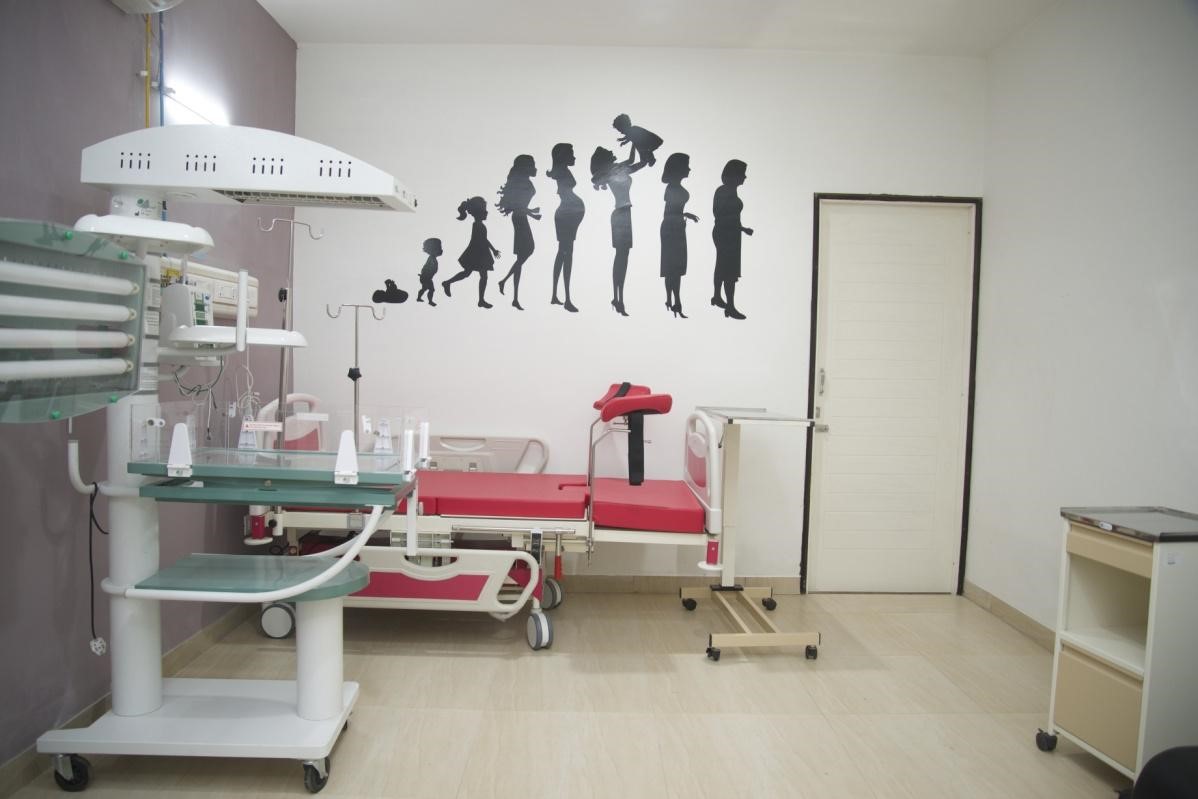





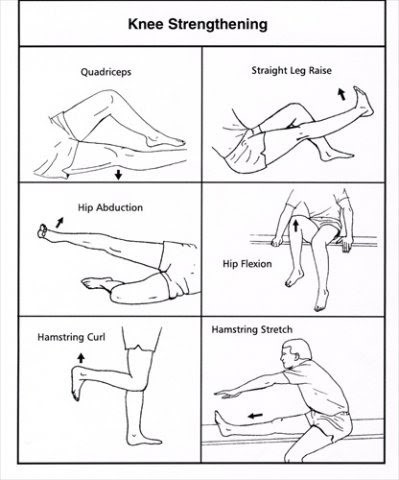





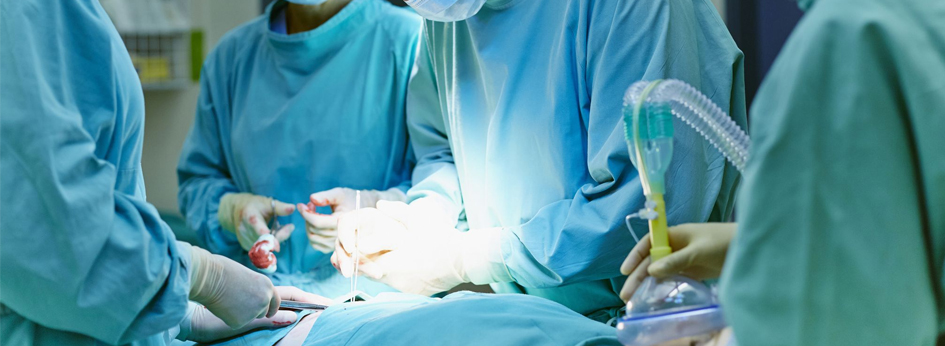


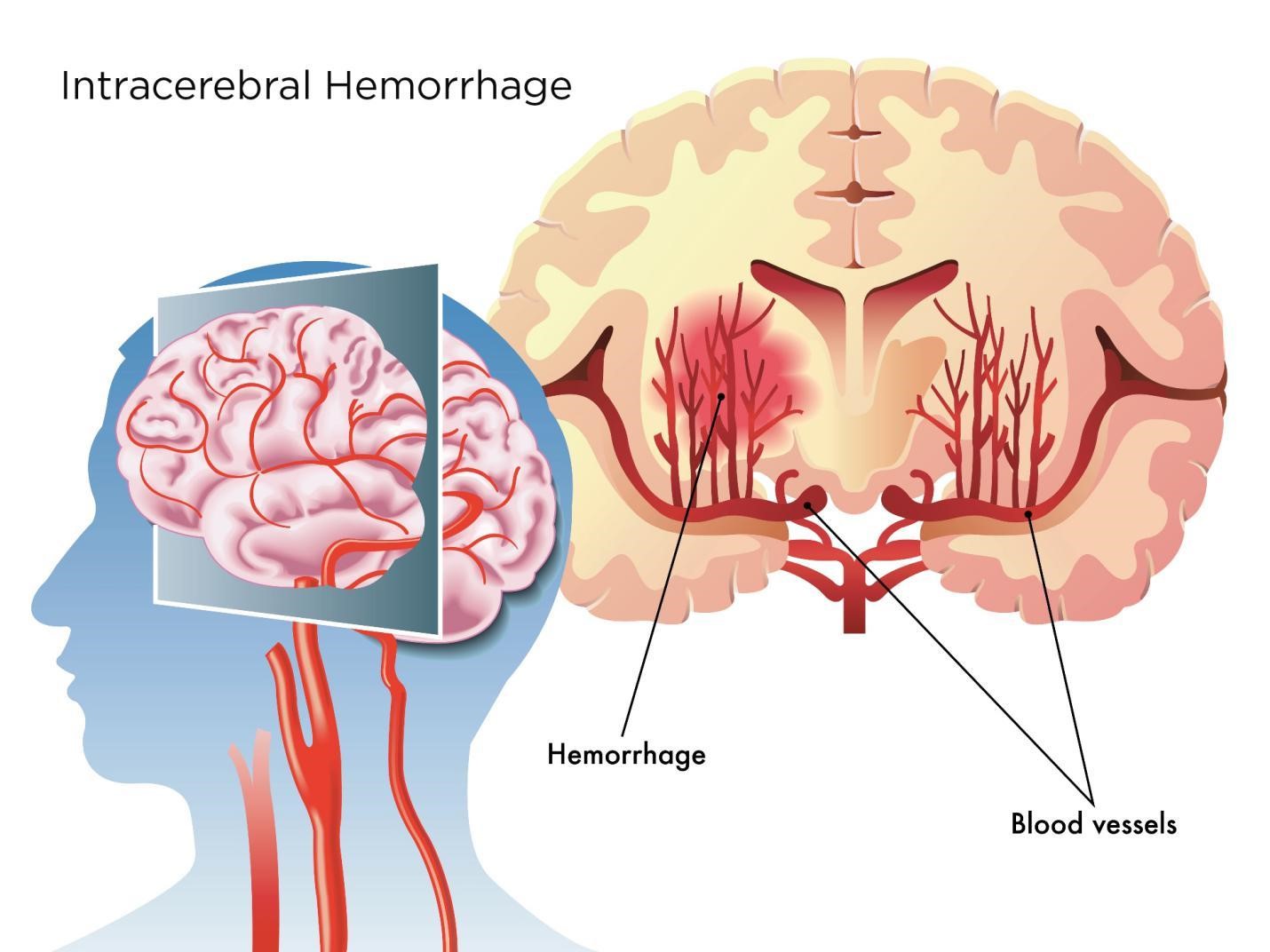











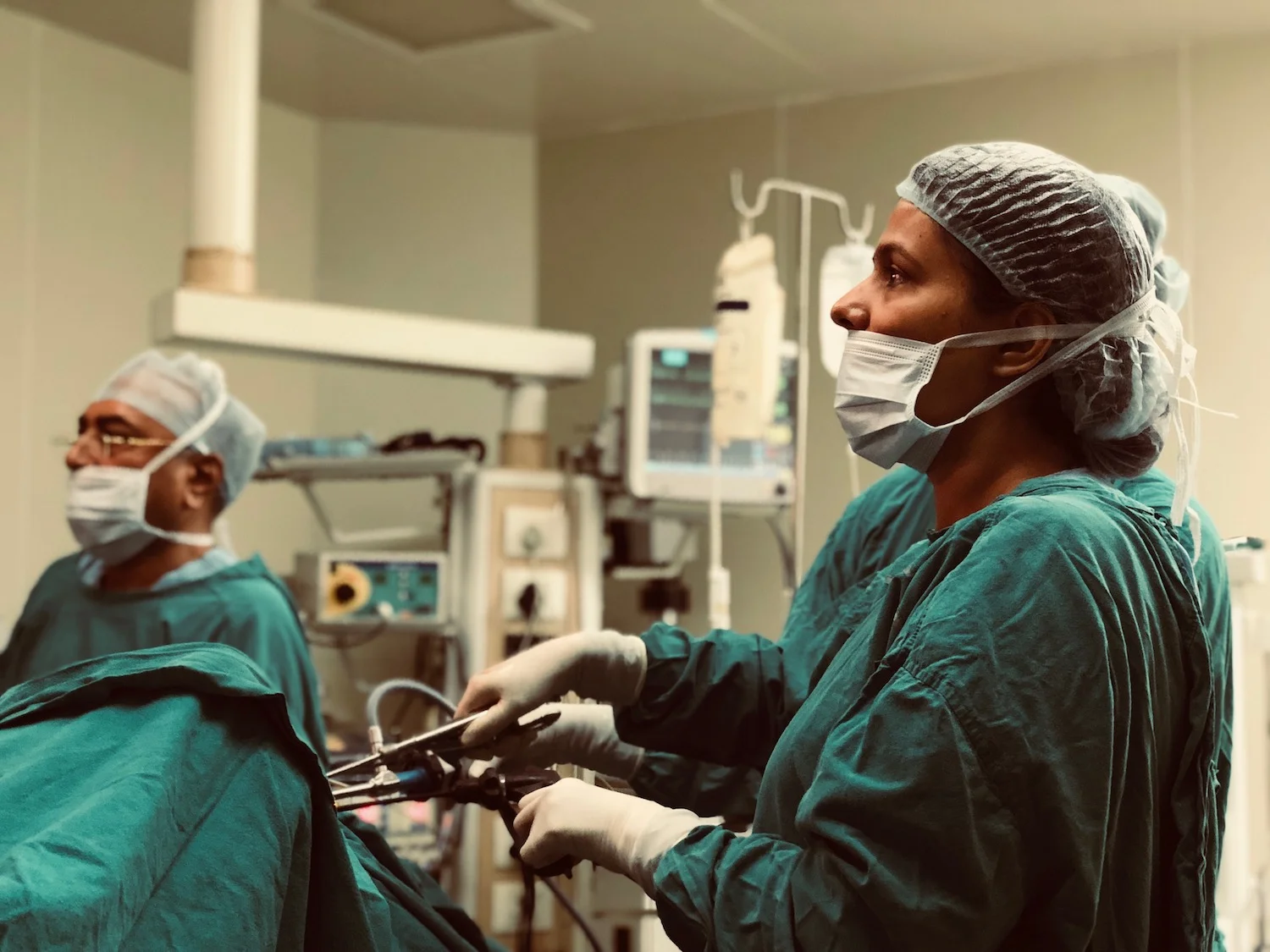


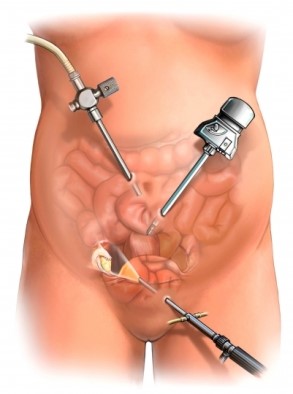
Pelvic pain affects the lowest part of the abdomen, mostly between the belly and the groin. The pain is usually felt as throbbing, burning or heaviness in the lower abdomen. Pelvic pain can occur both in men and women, and the possible onset for pelvic pain can be certain types of infections, abnormal functioning of some non-reproductive internal organs or pain that is generated from the pelvic bones.